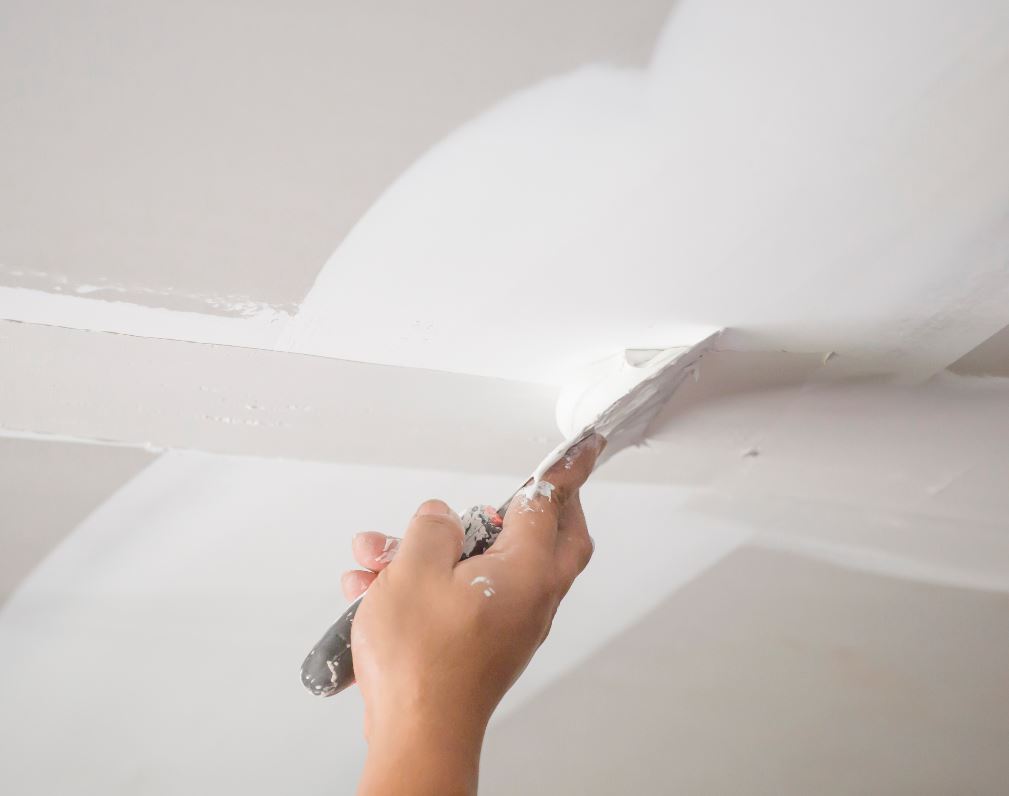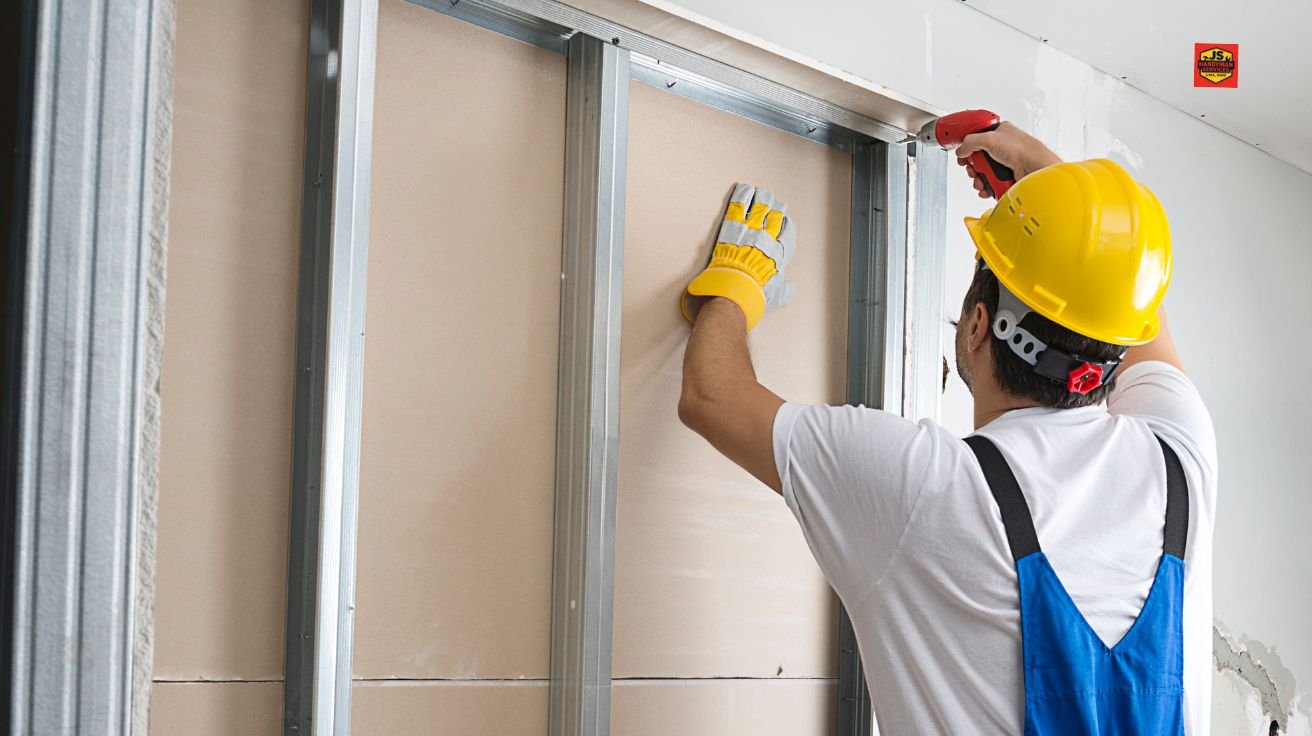Partner with dedicated drywall contractors to achieve flawless results in every Interior Painting project.
Vital Tips for Effective Drywall Fixing and Installation Techniques
Reliable drywall fixing and installation requires a cautious technique. Recognizing the kinds of drywall and having the right devices is vital. Accurate dimensions and proper methods can greatly affect the outcome. Many forget vital actions like taping and sanding, which can make or break the last look. As jobs proceed, typical obstacles might emerge that require attention. Exploring these pointers can bring about a much more sleek and successful finish.
Comprehending Different Kinds of Drywall
Comprehending the numerous sorts of drywall is necessary for any type of successful repair service or setup job. Drywall, typically known as plaster board, is available in several selections tailored for certain applications. Standard drywall is one of the most commonly made use of type, perfect for general indoor walls and ceilings. Moisture-resistant drywall, frequently eco-friendly in color, is made for areas prone to humidity, such as kitchen areas and bathrooms. Fire-resistant drywall, typically tinted pink or purple, is engineered to stand up to greater temperature levels and is often used in garages or near furnaces. Additionally, soundproof drywall helps in reducing noise transmission, making it ideal for multi-family homes or recording workshops. Specialized drywall, like cement board, is used in damp areas like showers or bathtub borders. Understanding these types aids in choosing the right material for every task, guaranteeing resilience and performance in repair work or brand-new installments.
Essential Tools for Drywall Repair and Installation
Having the right tools is important for effective drywall repair and setup. A quality utility blade is essential for reducing drywall sheets exactly. A drywall T-square aids assure straight edges, while a taping blade is needed for applying joint substance efficiently over seams. Furthermore, a drywall saw permits removing damaged sections or fitting drywall around components.
For hanging drywall, a power drill with drywall screws is indispensable, as it allows secure and quick setup. A level is additionally essential to validate that the drywall is straight and correctly straightened. A sanding block or post sander is necessary for raveling joint substance once it has actually dried. Finally, a measuring tape is crucial for precise measurements, preventing waste and making certain a correct fit. Equipped with these devices, people can take on drywall jobs efficiently, leading to professional-looking outcomes.
Step-by-Step Overview to Repairing Holes and Cracks
When dealing with openings and splits in drywall, having the right tools and materials is essential for a successful repair service. This guide details the necessary products and offers a clear, detailed procedure to effectively recover the surface. Recognizing these elements will aid ensure a seamless surface and resilient results.
Tools and Materials Needed
A fully equipped toolkit is essential for efficient drywall repair service and installation. Trick devices include an utility knife for cutting drywall, a measuring tape to guarantee exact sizing, and a drywall saw for larger openings. A putty knife is crucial for using joint substance efficiently, while a fining sand block or pole sander helps achieve a smooth finish. For patching, a roll of fiberglass fit together tape or paper tape is needed to enhance joints. Additionally, a drill and screws are required for safeguarding brand-new drywall pieces. Important materials consist of joint substance, primer, and paint to complete the repair work. Having these tools and materials on hand assures a smoother, much more effective repair service procedure, producing professional-looking outcomes.
Repair Service Process Steps
Fixing holes and fractures in drywall requires an organized technique to guarantee a seamless coating. The area surrounding the damage must be cleansed completely to remove dirt and particles. Next off, for small splits, a putty blade is used to use a joint substance evenly over the location. For larger openings, a patch is essential; the harmed section is cut out, and a new piece of drywall is suited location, get more info protected with screws. Once the patch is in position, joint compound is related to mix the sides. After drying out, fining sand the location smooth is important. Finally, the repaired surface area should be keyed and painted to match the bordering wall surface, making sure an unnoticeable repair work.
Strategies for Setting Up Drywall Panels
Installing drywall panels needs mindful preparation and precise implementation to assure a expert and smooth finish. Initially, it is important to determine the wall surface room accurately and reduce the panels to fit, making sure that they line up with the studs. Positioning the panels flat is generally recommended, as this can boost the architectural integrity and minimize the variety of joints.
Using drywall screws, installers must safeguard the panels every 16 inches along the studs, making certain a company hold. It is vital to stay clear of overdriving the screws, which can damage the paper surface area. For corners and edges, making use of an utility blade enables for clean cuts and a snug fit.

Finishing Touches: Insulation, Mudding, and Sanding
When the drywall panels are safely in position, the following vital action entails the complements of taping, mudding, and sanding. Taping is vital for creating a smooth change between panels and concealing joints. A top quality drywall tape, either paper or fiberglass mesh, need to be used over the seams, ensuring it adheres appropriately to the mud that will be used following.
Mudding, or using joint compound, complies with the taping process. This substance fills up spaces and smooths out the surface area. A first coat should be applied kindly, feathering the sides to mix with the drywall. After the first layer dries, succeeding layers might be required for a flawless surface.
Sanding is required to achieve a smooth surface. A fine-grit sandpaper must be utilized to carefully ravel any blemishes. Treatment needs to be required to avoid over-sanding, which can damage the drywall - Drywall Installation Ogden Utah. Appropriately executed, these finishing touches produce a specialist appearance ready for paint
Tips for Preserving Your Drywall After Setup
Preserving drywall after installment is vital to maintaining its look and structural honesty. Routine cleaning is necessary; dirt and dirt can build up, so gentle cleaning with a moist fabric is recommended. Homeowners ought to also evaluate for any type of indicators of wetness or mold and mildew, especially in high-humidity locations like washrooms and cooking areas. If any damage occurs, it is very important to resolve it immediately to avoid more issues.
Making use of furniture pads can assist prevent scrapes or dents from heavy products. Furthermore, painting the drywall with a top notch, cleanable paint provides an additional layer of protection and makes future cleansing easier. Avoid utilizing abrasive cleaners or tools, as these can harm the surface area. Finally, preserving a stable indoor environment with ideal humidity levels will certainly help prevent breaking or warping gradually. By adhering to these tips, one can ensure that drywall stays in exceptional problem for several years ahead.
Regularly Asked Inquiries
How Much Time Does Drywall Take to Totally Dry After Installation?

Can I Mount Drywall Over Existing Drywall?
Yes, drywall can be installed over existing drywall, but it is necessary to ensure the underlying surface area is safe and effectively prepared. This approach can improve insulation and decrease setup time, though it may include weight.
What Is the very best Method to Soundproof Drywall?
The very best way to soundproof drywall includes using specialized soundproofing materials, such as durable networks, acoustic caulk, and sound-dampening drywall. These strategies effectively lessen sound transmission between spaces, boosting overall acoustic performance in living areas.
How Do I Select the Right Drywall Density?
To pick the appropriate drywall thickness, take into consideration the application and area. Criterion property walls normally make use of 1/2 inch, while ceilings or specialized areas might require 5/8 inch for additional stamina and soundproofing abilities.
Are There Eco-Friendly Drywall Options Available?
Yes, environment-friendly drywall alternatives are offered. These include products made from recycled materials, gypsum boards with reduced volatile natural compounds (VOCs), and those using sustainable production processes, providing environmentally-conscious choices for building and restoration tasks.
Having the right devices is crucial for reliable drywall repair work and installation. For hanging drywall, a power drill with drywall screws is vital, as it allows safe and fast installation. Key tools include an energy knife for reducing drywall, a tape procedure to assure accurate sizing, and a drywall saw for larger openings. Yes, drywall can be installed over existing drywall, but it is important to guarantee the underlying surface area is safe and sufficiently prepared. The ideal way to soundproof drywall includes using specialized soundproofing materials, such as resilient networks, acoustic caulk, and sound-dampening drywall.